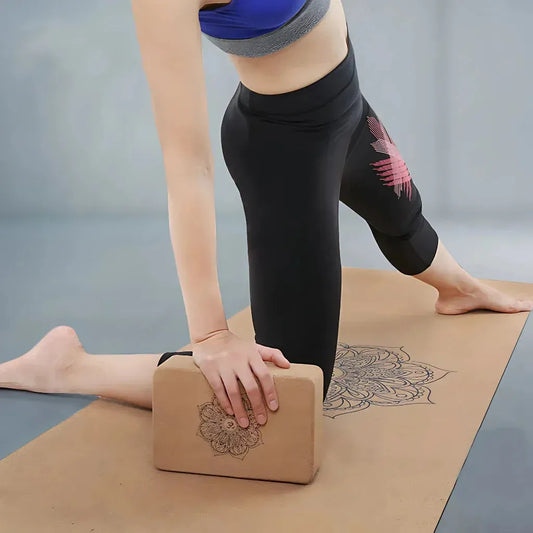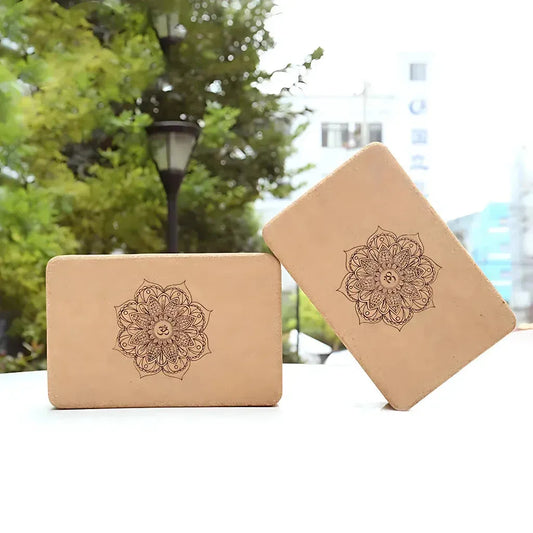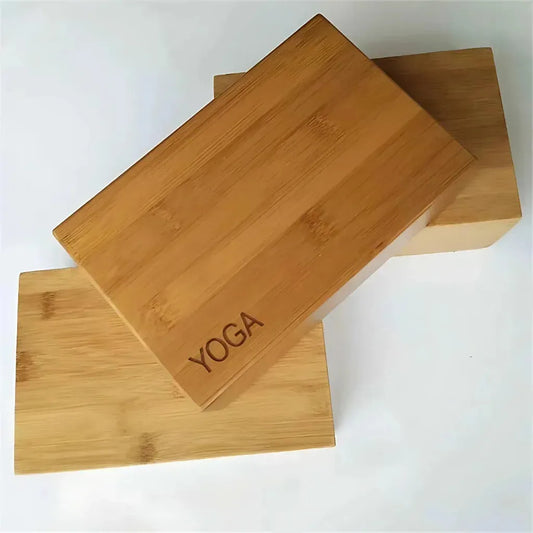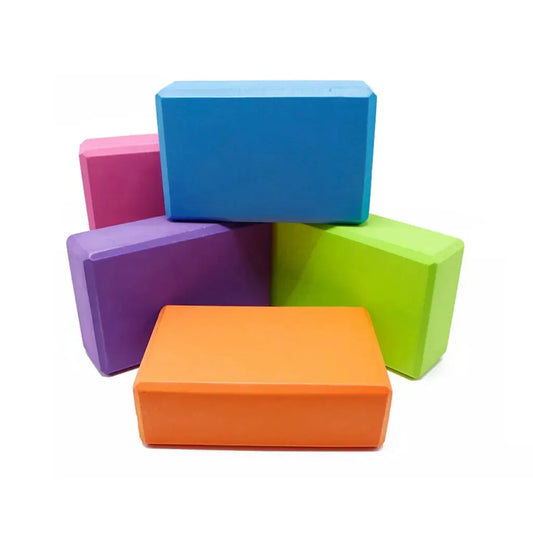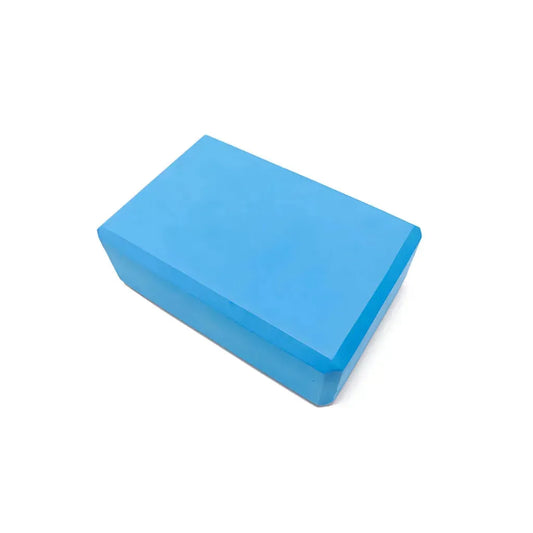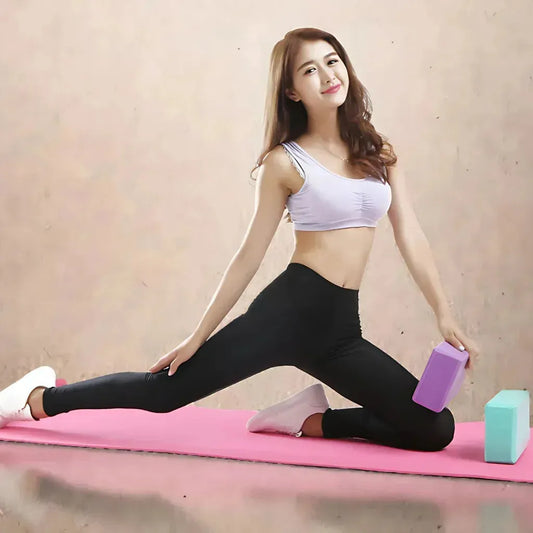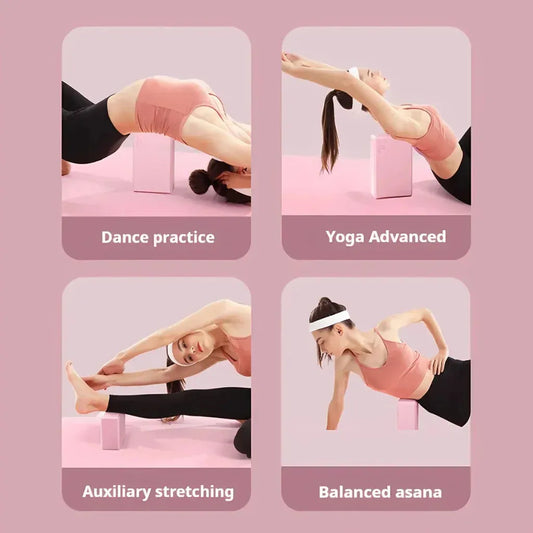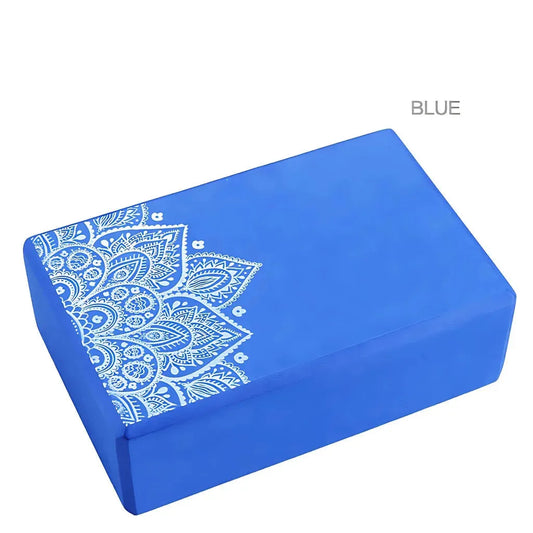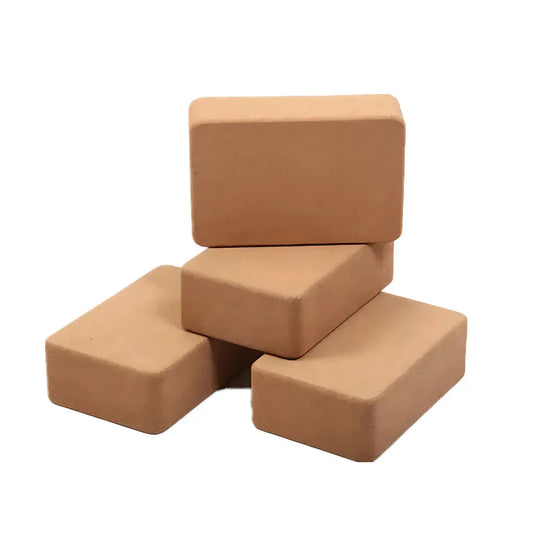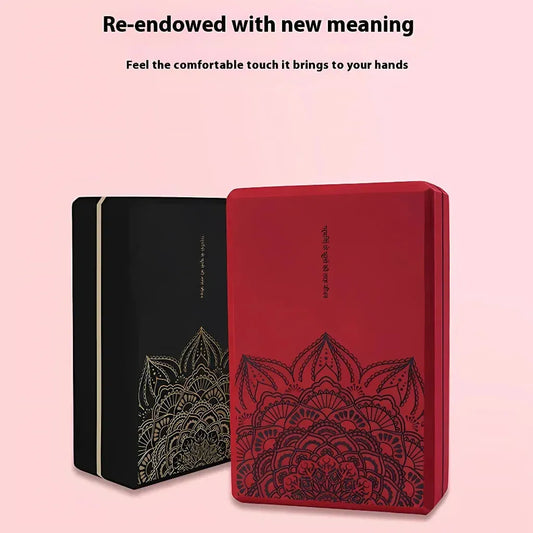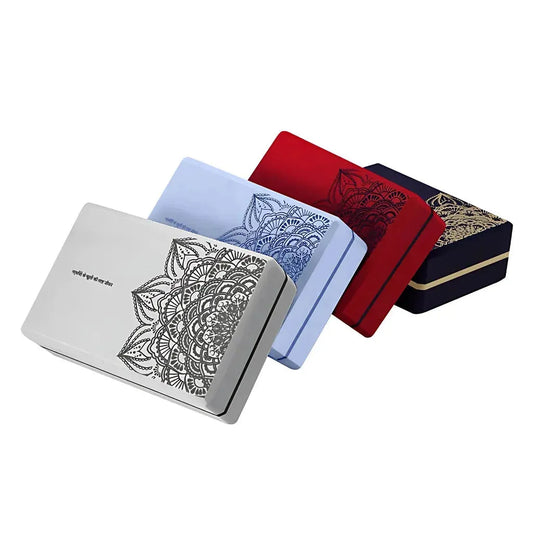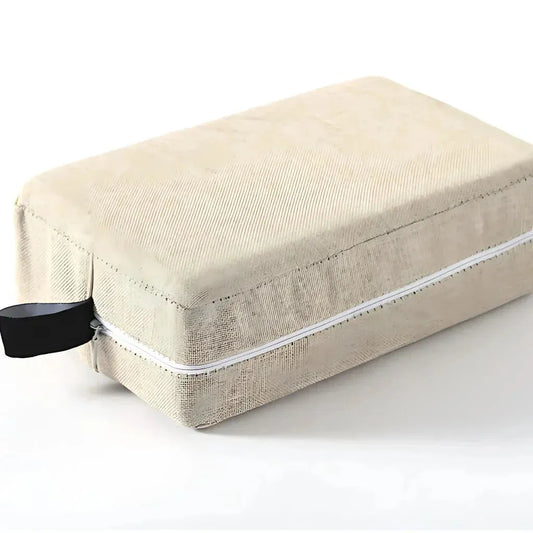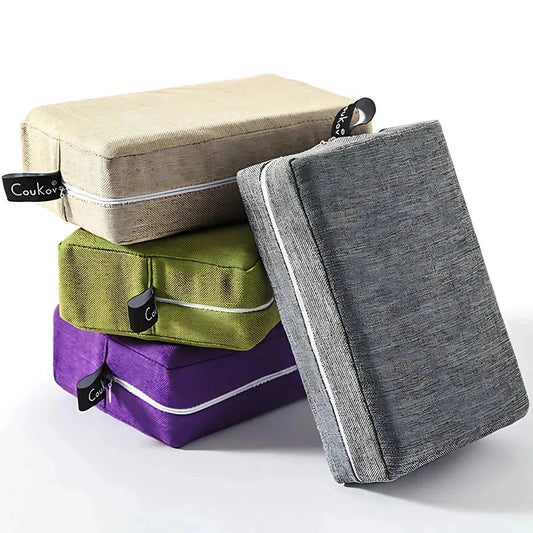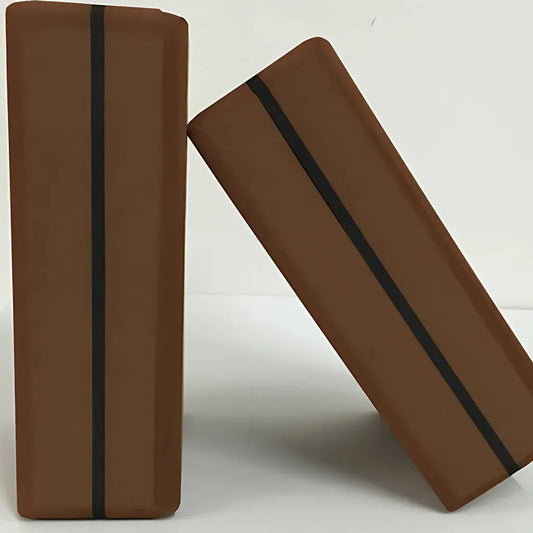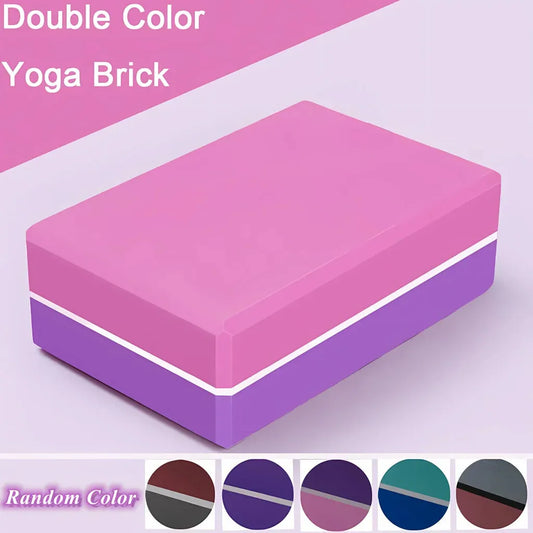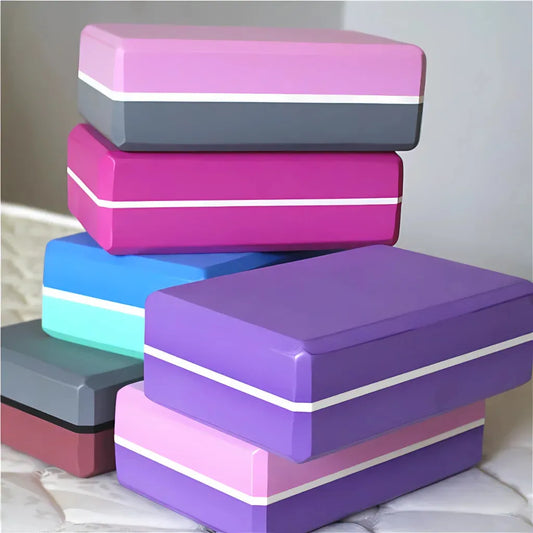Discover Your Foundation: The Essential Yoga Block Collection
Why Every Yogi Needs a Block: Bridging the Gap Between Body and Mat
Yoga blocks help when poses feel too hard to reach. They bring the floor up so you can do asana practice safely. New students and advanced yogis both need these props for different reasons.
Blocks help with flexibility training and building core strength. They give foundation support you need to stay safe. You can focus on breath control instead of struggling to touch the ground.
Use blocks during home practice or group classes. They make child's pose and downward dog easier. Advanced students use them for arm balance work too.
Understanding Search Intent: Blocks for Stability, Depth, and Core Activation
People want blocks for different goals. Some need stability in standing poses. Others want tools for enhanced flexibility in hip openers. Many look for equipment that helps core stability during strengthening work.
Your goals help you pick the right block types. Beginners like cushioned blocks for vulnerable poses. Advanced students want firm cork blocks for inversions and elevated poses.
Block usage changes by yoga style. Restorative yoga uses blocks for long savasana practice holds. Power yoga and vinyasa flow need them for quick movement patterns.
Find your flow with the right props today.
Technical Performance and Material Science
Foam Blocks vs. Cork Blocks: A Head-to-Head Comparison
Foam blocks feel soft and weigh only 200-300g each. Made from EVA material, they're easy to carry to workshops or outdoor yoga. The gentle feel helps wrists, ankles, and knees during holding poses.
Cork blocks weigh about 700g and give better grip. Natural cork material stays stable and won't slide during warrior poses. The firm feel helps with hand placement in upward facing dog.
Each material works for different therapeutic uses. Foam suits gentle yoga and beginners learning alignment techniques. Cork works for hatha yoga, vinyasa yoga, and advanced balance poses.
Decoding Block Density: The Science Behind Firmness and Support
Block density means how much the block squishes under pressure. High-density foam keeps shape but still cushions joints. Low-density foam squishes more for extra soft support.
Cork stays firm and won't flatten over time. This makes cork good for ankle support, knee support, and lumbar support. You get optimal alignment that lasts for years.
Firm blocks stop wobbling in balance work. Soft blocks cushion joints during floor stretching routines. Pick the right density for your goals and body type.
The Anti-Slip Grip Advantage: Ensuring Confidence in Advanced Poses
Easy grip keeps hands and feet safe during transitions. Cork feels rough without being sticky on skin. This works even when hands sweat during flow sequences.
Foam blocks have bumpy surfaces that grip mats and floors. The surface stops sliding in lotus pose and navasana pose. You need good proprioception and kinesthetic awareness for these poses.
Good grip lets you try new yoga techniques. When blocks stay put, you can push harder in twisting poses and reaching poses. This helps you overcome challenges in new asana variations.
Check out flexible tools that work great with blocks.
Conscious Craftsmanship and Durability
Our Commitment to the Planet: Eco-Conscious and Ethically Sourced Materials
Eco-friendly blocks use sustainable materials that match wellness values. Cork comes from tree bark that grows back. Harvesting doesn't hurt trees, making this earth-conscious props for yoga.
EVA foam blocks skip harmful chemicals during making. The process helps the planet while creating strong, odorless tools for practice. Safe dyes make bright colors that don't irritate skin.
Picking sustainable materials extends yoga philosophy past the mat. Each block shows conscious choices about how accessories get made. This strengthens intention setting in daily wellness routines.
The Longevity Promise: Blocks Designed to Withstand a Lifetime of Practice
Good construction means blocks keep shape through years of training. Cork won't squish even under full body weight. It works for all body types and levels of practice.
Foam blocks keep their size through many yoga sequences when cared for right. The closed-cell structure stops moisture, keeping blocks clean through online classes and guided sessions.
Strong blocks grow with your journey. From introduction to yoga through advanced workshops, same blocks support changing goals. This makes them smart buys for any individual practice.
Minimalist Design Philosophy: Focus on Function and Natural Aesthetics
Clean lines and neutral colors show ergonomic design that works first. Blocks have rounded edges that feel good during neck stretches and lengthening stretches. The shape fits hands without sharp corners.
Natural cork's warm color looks nice anywhere. Foam blocks in blue, green, pink, and gray match your mindful lifestyle. Simple looks help visual focus during meditation and quieting the mind.
Function-first design means no extra stuff. Each curve helps—supporting wrist alignment, creating focal points for visualization, or making smooth transitions in flow practice.
How to Use Your Yoga Blocks: A Beginner to Advanced Guide
Mastering Alignment: Using Blocks for Proper Form in Key Asanas
Good alignment in standing poses starts with right foot support. Put a block under your hand in extended poses to keep neutral spine and open chest. This reinforcing alignment builds muscle engagement without strain.
For seated work, blocks under sit bones create natural alignment of pelvis. This easy change makes forward bends doable while protecting lower back. Understanding alignment through blocks speeds up improvement in flexibility.
Key poses like lotus position get easier with block support under knees. This grounding technique cuts stress on joints while building range of motion slowly. Safety in learning stops setbacks and builds strong foundations.
Deepening Stretches: Employing Blocks for Enhanced Flexibility
Ultimate flexibility comes from patient, supported stretching. Put blocks under hands during deep stretches to reach past current ability. This technique for active lengthening builds gains without forcing anything.
Hip openers work great with dual-purpose blocks placed smart. Supporting outer thighs during lying poses lets you relax fully while gravity works. Tension release happens by itself when body feels secure and safe.
Block exercises get harder by lowering block height as you get bendy. Start tall in splits prep. Move to medium, then flat as quads support gets better through practice.
Restorative and Yin Yoga: Finding Comfort and Release with Supported Poses
Restorative yoga uses blocks to hold nourishing poses for long time without work. A block under spine in supported bridge lets you de-stress while opening chest. Body unwinds as muscles let go of stored tension.
For savasana changes, blocks under knees cut low-back pressure. This helps people with lumbar issues find the relaxation needed for recovery and healing practices. Comfort lets meditation go deeper for better restoration.
Yin yoga's long holds work better with right support. Blocks placed for arm support or neck support stop fatigue during minute-long poses. This makes space for knot release and myofascial release to happen naturally.
See round tools for more body work.
Sizing and Selection Guide
Choosing the Right Dimensions: 3-Inch vs. 4-Inch Blocks for Your Practice
Standard blocks measure about 23cm x 15cm x 7.5cm (9x6x3 inches). This height works for most block uses in beginner yoga through middle work. The size gives enough lift for proper posture support.
Some brands make 4-inch thick blocks for tall people or those with tight muscles. Extra height brings floor up more, making standing poses easier. Think about your size and current range of motion when picking dimensions.
Block length and width stay mostly same across brands. The 23cm length fits most hand placements well. Width gives good stability for foot placement in changed variations of poses.
One Block or Two? Recommendations for Balance and Support
One block does many things in individual practice. It works for one-sided changes and uneven poses. Many people start with one to try basic block variations and block benefits.
Two blocks let you support both sides, which matters a lot. Restorative poses often need two blocks for even weight distribution. Having a yoga blocks set lets you do wider stance work and support multiple spots at once.
For serious students going to regular classes or building home practice, buying two blocks helps a lot. Having a set opens options for block exercises that build core activation and full-body awareness.
Block Shape and Edges: Impact on Comfort and Grip
Most blocks have straight edges with slight rounding for comfort. The round corners stop discomfort during long contact with skin. This matters during winding down sequences and gentle stretching work.
Some special blocks have circular or curved shapes. While not common, these unique designs help specific therapeutic purposes. Regular rectangle blocks stay most useful for standard yoga poses and techniques.
Edge quality changes how blocks feel during use. Smooth, well-done edges slide easy across mats without catching. This detail helps smooth transitions between poses in energizing sequences and warm-up exercises.
Beyond Posture: Integrating Blocks into Your Wellness Routine
Holistic Intent: Blocks for Grounding and Energetic Balance in Meditation
Blocks help meditation practice by making comfy seated spots. Lifting hips above knees in lotus position cuts strain and lets you sit longer. This grounding support helps get the stillness needed for visualization techniques and breath work.
Using blocks as focal points during pranayama techniques keeps attention steady. Put hands on blocks while doing ujjayi breath to feel stability. This physical touch helps focus when learning new breath control methods.
Some people use blocks in energy work for awareness of subtle body. Putting blocks at specific body points during guided meditation gives gentle pressure that helps feel energy flow. This respects the anatomy of yoga's subtle teachings.
Activating Core Strength: Using Resistance for a Deeper Workout
Functional training uses blocks past regular asana. Squeezing a block between thighs during planks works inner thigh and core together. This creates quantitative benefits for strength building and muscle work.
Core stability exercises get harder with blocks added. Holding a block overhead while doing exercises makes abs work more. These changes turn standard fitness moves into mind-body work that connects everything.
Physical therapy and yoga therapy use blocks for kinetic energy awareness drills. The feeling from pressing against blocks helps retrain movement patterns after injuries. This makes them good tools for getting better after hurt.
Portable Practice: Selecting the Best Block for Travel and Retreats
Travel needs favor lightweight blocks that pack easy. Foam blocks win for moving due to low weight and strength against rough handling. They make keeping practice simple at retreats, workshops, or outdoor yoga spots.
Some people keep travel blocks apart from home blocks. This cuts out needing to pack and unpack stuff all the time. Having special travel blocks means preparation never stops practice when away from home.
For those caring about time management, compact options exist that balance moving with working well. Regular solid blocks stay the best for top support, even if they need more careful packing for keeping practice going.
Start your learning path with needed gear now.
Care and Maintenance for Longevity
Specialized Care for Cork: Natural Cleaning and Odor Prevention
Cork blocks clean easy with wet cloths and mild soap. The material fights germs by itself. Wipe after each practice to remove sweat and keep fresh for continued use in all sessions.
Don't soak cork in water—too much wet hurts structure. A quick wipe works for normal care. For deeper cleaning, use watered-down vinegar that keeps natural material without harsh chemicals that damage.
Let cork air dry fully between uses. Store in open spaces away from direct sun, which dries material too much. Right care keeps cork blocks' grip and strength through many repetitions and practice times.
Keeping Foam Blocks Pristine: Gentle Washing and Drying Tips
Foam blocks handle more wet than cork but still need gentle care. Wash with mild soap and water, squeezing soft to avoid tearing structure. Rinse well to remove all soap that might hurt grip quality.
Air drying stops damage from heat. Pat with towels to remove extra water, then let natural drying in open air. Never use dryers or put near heaters—heat breaks down foam over time and hurts how it works.
Regular cleaning stops buildup that hurts grip. Making a routine keeps blocks fresh for group classes where tools get shared. This care protects both clean and the buy in quality accessories for wellness.
The Active Lineage Ethical Story
From Source to Studio: The Transparent Sourcing of Our Materials
Cork comes from forests where trees don't get hurt during harvest. EVA foam comes from suppliers who care about planet. Knowing the story behind materials helps match buys with personal values and lifestyle picks.
Being open means sharing both wins and ongoing hard parts. We keep looking for better ways to get sustainable materials while keeping performance needs. This honesty builds trust with yoga community we serve through real talk.
Each block's trip from raw stuff to done product has careful watching. Quality checks at every stage make sure only best options for blocks reach students, teachers, and people worldwide who need reliable equipment always.
Supporting Ethical Manufacturing: Our Commitment to Fair Labor
Fair work rules underpin every product made. Workers get right pay and safe places. This ethical base honors the idea that wellness goes to everyone in supply chain, making harmony through all production steps.
Working with makers who share these values takes time to build. We pick relationships over cutting costs. The result is products made with care by people treated with respect at every making stage throughout process.
Helping ethical making lifts whole industry up. Every buy becomes a vote for better ways. This group action creates reformative practices that help workers, communities, and planet for future people to come and enjoy.
Join the Conscious Movement: Practicing with Intention
Picking blocks means more than buying stuff. It shows commitment to growth, healing, and finding self through dedicated practice. Each use backs the choice to practice with awareness and universal benefits in mind for full vitality living.
The conscious movement has people worldwide who value harmony between action and belief. Using props from ethical sources extends yoga philosophy into buying choices. This wholeness creates vitality practices that fill every part of lifestyle and daily wellness routines completely.
Your practice ripples out. The tools you pick, companies you help, and values you show all add to group wellness. Join us in practicing with intention, one mindful choice at a time for better world.
See all practice tools for your full wellness path.
Options have cork with bamboo mixing natural stuff. Pure cork picks focus on grip and lasting long. Flexibility designs target specific stretching goals clearly.
For earth-conscious practice, sustainable picks show that working well and planet care unite nicely.

